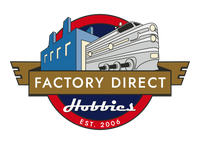The Pennsylvania Railroad was well known for their usage of electrified freight railroading. They took advantage of their main lines being electrified for passenger usage from Washington to Harrisburg and even to New York. In fact, it was predicted that the future of rail would rely on electrifying future routes for this type of service. In the 1960s, the Pennsylvania Railroad needed a new electric motor to replace their aging P5a motors, which had been in service since the 1930s. The PRR settled on GE’s E44 motor. The E44 was able to output 4,400 horsepower in a boxy shape, which ultimately helped gain its nickname of “brick”. Sixty class E44 electric motors were built by GE, with a silicone diode rectifier.Sixty class E44 electric motors were built by GE, with an ignitron rectifier system. Six more were built using the new silicone diode rectifier system GE instituted and classified as E44a and rated at 5,500 horsepower. During the Penn-Central era, 22 E44 motors were upgraded to E44a specifications. However, when Penn-Central became embroiled in their bankruptcy woes, the program was halted.
Login / Signup
Close Modal
My account
New customer? Create your account
Lost password? Recover password
Remembered your password?
Already have an account?
0
Close Modal
Cart
Customers have reported increasing rates of “porch pirate” package thefts. Extend™ Shipping Protection replaces any lost, damaged, or stolen packages, and we recommend adding this protection to your order. FDH is unable to recover lost, damaged, or stolen packages that are not covered by Extend™ Shipping Protection.

























